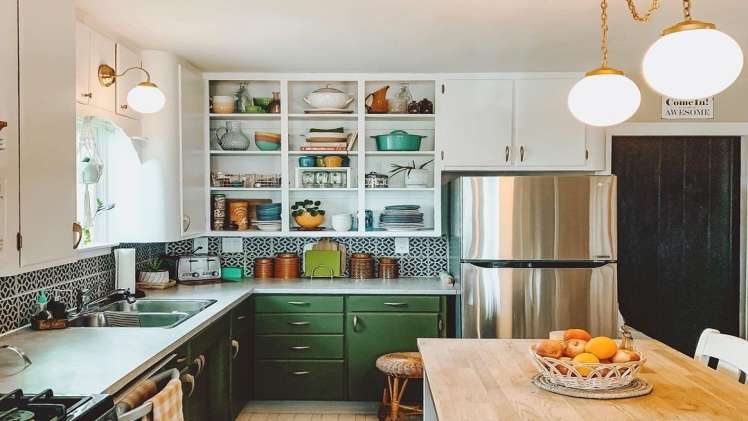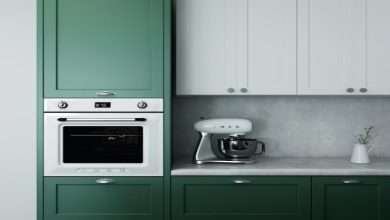How to Make a Modern Kitchen in a Pre-War Home

Living in a pre-war home can be an incredible experience. The era preceding World War II, from both an interior design and architectural perspective, is unique in many ways. Anyone who has lived in one of these older dwellings will tell you just how special they can be, though maintenance will always be something that remains top of mind
Older homes have a sort of character that cannot be replicated or manufactured. While you could always build a new home with new features, you can never build an old one. Like a fine wine, many homes only continue to get better with time.
In fact, when they are well-maintained and updated, homes that are more than 80 years old typically sell for a higher value than homes that are 10-30 years old in the very same neighborhood. Many homebuyers are willing to pay a premium for older homes and the strong character these homes come with.
Of course, for an old home to sincerely maintain its value (and continue appreciating over time), this home will still need to have some occasional updates. The most important room for homeowners to continue updating is, without a doubt the kitchen. The kitchen is the room that is most reliant on having reliable appliances. Unsurprisingly, the kitchen is also the room that realtors recommend updating most often.
If you are currently the owner of a pre-war home, you might be unsure how to bring your kitchen into the 21st century while still maintaining its historic character. In this article, we will discuss some of the most useful tips for homeowners of pre-war homes that are looking to upgrade their kitchen. By keeping these helpful ideas in mind, you’ll be able to combine the best of the old with the best of the new.
1. Invest in Sturdy Infrastructure Pieces
Not every component of your pre-war needs to be updated—the crown molding, the traditional tiles, and other detailed features are largely what makes it so charming—but there are many features that certainly will need to be updated, at least once every ten to fifteen years. Features such as your refrigerator, your faucet, and other basic appliances will directly affect how your kitchen can be utilized. If you are in Colorado and hoping to install new features that still look like they are from the pre-war era, consider consulting with a kitchen design center in Denver.
2. Use Multiple Types of Lighting
Lighting is one of the most important elements of interior design and is also one of the easiest ways to make an older space look new. Diversifying the types of lighting you have in your home can help bring your kitchen to life and highlight its most notable pre-war features. Recessed ceiling lights, lighting under cabinets, and pendants are just a few of the ways you can make your kitchen better illuminated. Furthermore, to make your kitchen even more lighting, consider installing a smart lighting system.
3. Keep Rustic Materials
While your kitchen designer will obviously begin by asking you about the things you hope to replace, you should also be thinking about the historic features you want to keep. Maintaining (and possibly restoring) materials from the pre-war era will help make it easy to maximize your home’s current value. Aged wood, old brick, and other visibly aged materials will help your kitchen maintain its charm without losing any of its functionality.
4. Paint—Don’t Replace—Your Cabinets
Cabinets are often one of the first things that people notice when they walk into a kitchen. If you are hoping to give your home a facelift, your cabinets might seem to be a logical place to get started. However, older cabinets are often crucial for maintaining pre-world charm. Instead of ripping out your cabinets and installing something completely new, consider painting cabinets instead. Not only does this help ensure your kitchen remains preserved, but it will also help you save a considerable amount of money.
5. Replace Your Windows
Windows directly affect your home’s energy performance and, generally speaking, windows should probably be replaced at least once every twenty-five years. This is especially true in places such as Colorado that have four distinct seasons, or Texas that has high levels of humidity. Choose a window supplier that is certified to work on historic homes. Not only will they be able to remove all led paint (something very common in pre-war homes), but they will also be able to install the windows in a way that keeps the historic charm.
6. Use Backsplash to Highlight Key Features
A backsplash is an affordable way to highlight key features in your kitchen and tie the whole room together. If the already existing designs in your kitchen are rather “busy”, consider using a simple backsplash that incorporates complementing colors. On the other hand, if the color scheme is relatively basic (many kitchens are mostly just white), a distinctive backsplash is an easy way to create some additional character. Either way, a backsplash is a feature that can be easily added to both newer and older kitchens.
7. Maximize Surface Area
When compared to kitchens of the modern era, many pre-war kitchens offer relatively limited space for cooking and storage. Finding creative ways to add more surface area to your kitchen can help add utility without sacrificing charm. Vertical shelving, butcher blocks, and layered workstations are just a few of the ways you can easily increase the amount of space you have available.
8. Think About Logistics
Lastly, it is critical to always remember that your kitchen isn’t just for looking at—it’s for cooking and actually living in. With an ambitious renovation project, it can be easy to forget about the logistics involved in actually getting your food to the table for eating. Recognizing your personal cooking habits, the appliances you’ll use the most, and the ways you move about the kitchen while cooking (for example, is it important for you to have a chopping station near the stove?) will help you get more oriented and ready to design the kitchen of your dreams.
Conclusion
In a pre-war home, kitchen designers will need to think about maintaining the careful balance of historic beauty and modern utility. In most situations, working with an experienced kitchen design team can be very beneficial.





